I heard about the ternary iron phosphate lithium plan from the manager of C Prologue. The greatest advantage of this plan is that it reduces the cost of thermal runaway insulation, and it can also add more electricity than pure iron by using two sets of BMS management. My judgment at that time was: there is no need to use such a complicated technology to implement this plan.
As for the reasons why NIO chose this plan from my personal understanding:
(1) Effectively reduce costs: Previously, NIO’s 70kWh manufacturing mode was to purchase the module from CATL and then assemble it at ZKW, with an overall cost estimate of over 1 RMB/Wh. The problem here is that the module’s price has little room for reduction, at over 0.8-0.9 RMB/Wh. Moreover, including the pack cost makes it even higher. However, this plan, based on mainly cylindrical iron phosphate CTP modular design, can effectively reduce costs and is expected to be around 0.75-0.8 RMB/Wh. This lays a foundation for NIO’s future progress.
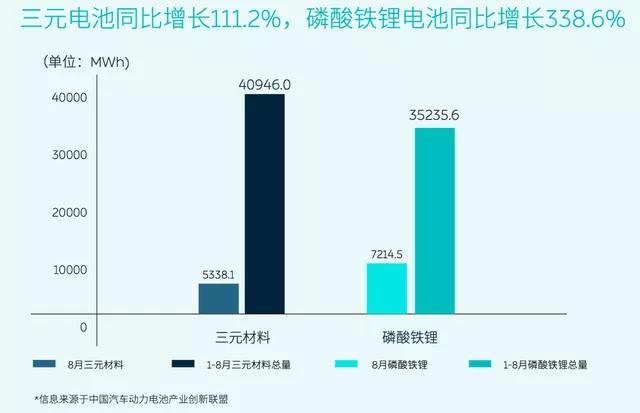
(2) Energy provided to users: If users switch to iron phosphate, it’s difficult to deal with the situation of energy loss. We can compare the incremental data of two battery systems (only for reference): The commonality between both the batteries at the modular design is that the overall envelope remains unchanged.
NIO’s 70kwh (355 module)=>Iron phosphate 68kwh with 6 CTP modules => 75kWh hybrid version with 6 CTP modules
Another battery configuration 52kwh (355 module)=>Ni55 70kwh version with 6 modules, iron phosphate version covers 420km, which is roughly equivalent to 50kwh, but slightly less.
In my opinion, it’s difficult to achieve a higher absolute capacity level even after implementing CTP in the energy density of a single cell. And even if it’s in terms of the available energy window, one may be 85%, while another may be 92%, with a difference of about 7%. Even though this 7kWh could make a difference, especially to NIO as a company that wants to move forward. However, I still need to figure out how this 7kWh was added, especially since the capacity is not consistent.
Note: Within this line, CATL’s recommended plan is the key connecting element, and their recommendation initially determines the overall trend.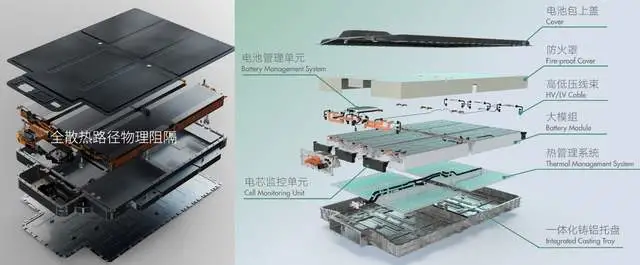
What Have the NIO Engineers Done?
I can understand what the engineering department of NIO has done in limited space. All engineers who switch from ternary to iron phosphate have several core issues: how to estimate SoC, how to deal with low temperature, and how to deal with different swelling of different types of cells in the follow-up.
(1) How to estimate SoC
From the division of labor, NIO’s BMS team develops its own software, so it is challenging for them to use iron phosphate. Therefore, in the situation where things have come to such a pass, they choose to mix ternary and iron phosphate to make the best use of the situation. As I understand it, the dimensions of the cells are the same, the capacity of ternary is higher, but the usage window of ternary lithium is only 10-90%, leaving 20% unused, and only the middle section of ternary is used. Four cells are used here, mainly to calibrate the entire range of iron phosphate using the most optimal slope of the original ternary voltage.
The most interesting part here is the difference in the cycle life of balanced ternary and iron phosphate, which differs by half. NIO’s current approach is to use a larger low SoC window for ternary, and a larger capacity window for iron phosphate.
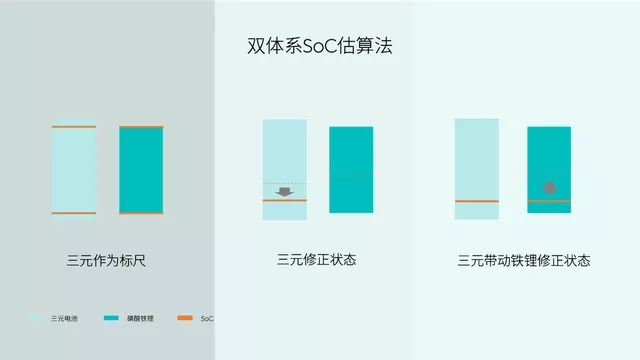
(2) Module Layout and Fuse Arrangement
In the recommended scheme of Ningde, there are various interval layouts, but it seems that NIO’s scheme is mainly based on iron phosphate, and ternary mainly adds 7kWh, so the number is limited, mainly on the 24-cell increment of 6 modules for replacement. Of course, some confirmation may be needed after obtaining the physical objects, and this schematic diagram confused me for a long time.
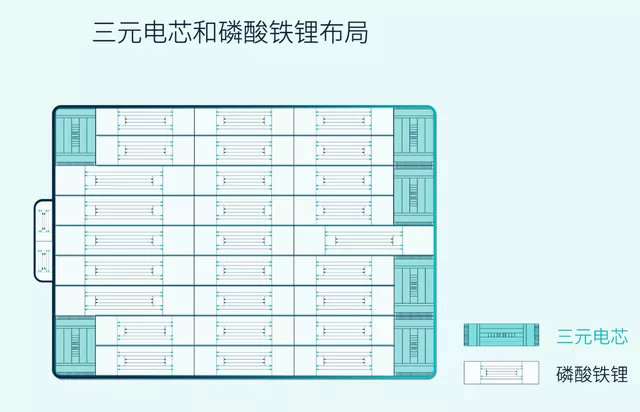
At the on-site press conference, the fuse box was specially emphasized. As I understand it, the original distribution box and BMS are both in the front end, and because the location for battery swapping is fixed, the length of the middle module (which may be called a battery block under the CTP) is different from that of the two sides, leaving the main fuse position here. Therefore, the size of the 6 cell blocks here is uneven.
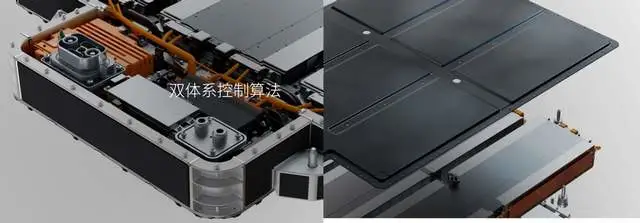
(3) What is DCDC?The importance of DCDC was emphasized at the press conference, and I didn’t quite understand what it meant. There are two possibilities: one is that a dedicated DCDC is used for battery detection and balancing to achieve balance, but the probability of using this DCDC for active balancing is relatively low. The other possibility is to provide a continuous power supply mechanism for the battery pack to achieve balance strategy.
(4) Low temperature management
On site, it was mentioned that in the development process, through big data analysis, they found the parts where their home batteries were prone to cold, and proceeded to adjust the placement of ternary materials, after multiple tests and experiments.
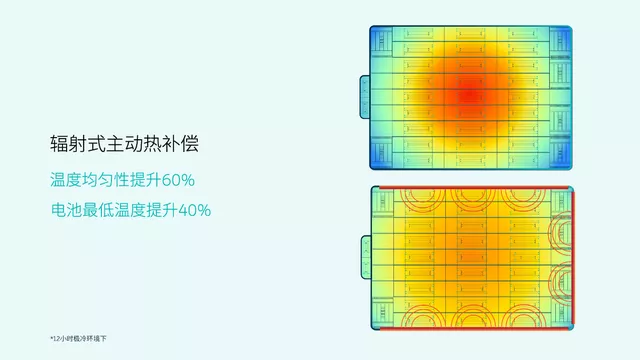
Conclusion: I feel that it takes more time to think about the design of this battery pack, which is quite interesting.
This article is a translation by ChatGPT of a Chinese report from 42HOW. If you have any questions about it, please email bd@42how.com.